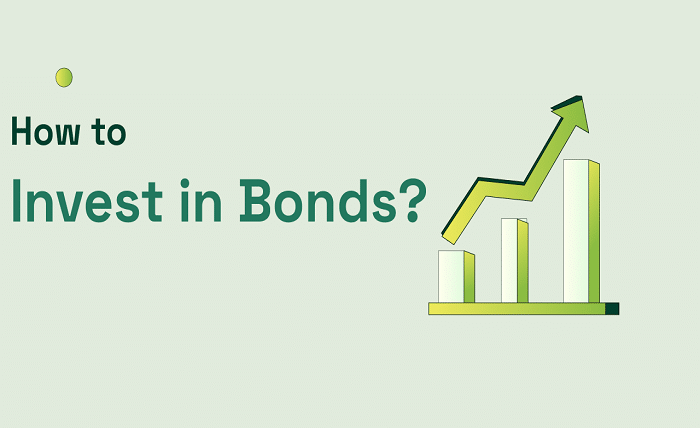The Ultimate Guide on How to Invest in Bonds: A Step-by-Step Approach

When it comes to building a diversified investment portfolio, bonds are a critical asset class to consider. Whether you’re a novice investor or looking to refine your investment strategy, learning how to invest in bonds can provide a steady stream of income and help reduce overall portfolio risk. Bonds are known for their reliability and can be a safe haven during volatile market conditions.
In this blog post, we will break down the essentials of bond investing, from understanding the basic mechanics of bonds to more advanced strategies. By the end of this guide, you’ll be equipped with the knowledge you need to start investing in bonds, make informed decisions, and achieve your financial goals.
What Are Bonds and How Do They Work?
Before diving into the specifics of how to invest in bonds, it’s important to understand what bonds are and how they function in the world of investing. A bond is essentially a loan made by an investor to a government, municipality, or corporation. In exchange for the loan, the issuer agrees to pay interest over a specified period and return the principal amount at maturity.
Bonds are considered a safer investment compared to stocks, as they offer more predictable returns. However, they come with their own set of risks, including interest rate risk, credit risk, and inflation risk. Understanding these risks is essential when learning how to invest in bonds and making choices that align with your financial goals.
Different Types of Bonds to Consider
Now that you understand the basic mechanics of how bonds work, it’s essential to familiarize yourself with the different types of bonds available. Each type of bond serves a different purpose and comes with varying levels of risk and return. The key to successful bond investing is choosing the right type of bond based on your financial objectives, risk tolerance, and time horizon.
- Government Bonds: These are issued by federal governments and are considered the safest bonds. U.S. Treasury bonds, for example, are backed by the U.S. government and offer low yields but minimal risk.
- Municipal Bonds: Issued by local governments, these bonds are typically tax-exempt, making them an attractive option for investors looking to minimize their tax liabilities. However, they can carry some level of credit risk depending on the issuing municipality.
- Corporate Bonds: These are issued by corporations and tend to offer higher yields than government bonds due to the higher risk associated with them. Corporate bonds come in a variety of ratings, from investment-grade to high-yield or “junk” bonds.
- International Bonds: These are issued by foreign governments or corporations. Investing in international bonds can provide exposure to different economies, but they come with additional risks such as currency risk and geopolitical risk.
Understanding the different types of bonds is a critical part of learning how to invest in bonds and selecting the right one for your needs.
How to Buy Bonds: A Step-by-Step Guide
Once you’ve decided on the type of bond you want to invest in, the next step is to figure out how to buy bonds. Unlike stocks, bonds are not typically bought and sold on stock exchanges. Instead, they are traded over-the-counter (OTC), meaning you’ll need to go through a broker or financial institution to purchase them.
Here’s a step-by-step guide to buying bonds:
- Choose a Broker: The first step in purchasing bonds is to select a broker or financial institution that allows you to trade bonds. Many traditional brokers and online platforms, such as Fidelity, Charles Schwab, and E*TRADE, offer bond trading services.
- Decide on the Type of Bond: Based on your financial goals, risk tolerance, and investment strategy, decide which type of bond to buy. This is the most crucial step in the process, as the bond you choose will determine your potential returns and risks.
- Select the Maturity Date: Bonds have a fixed maturity date, at which point the principal is repaid to the investor. When buying bonds, you’ll need to choose how long you are willing to commit your money. Bonds can range from short-term (1-3 years) to long-term (10+ years).
- Determine the Yield: The yield on a bond represents the annual return you’ll receive based on the bond’s price and coupon rate. Make sure to understand how yield works and compare yields across different bonds before making a purchase.
- Place Your Order: Once you’ve selected the bond, place your order through your broker. Depending on the type of bond, you may either purchase it at face value (par) or at a premium or discount.
By following these steps, you’ll be well on your way to learning how to invest in bonds successfully.
The Risks of Bond Investing: What You Should Know
Like any investment, bonds come with their own set of risks. Understanding these risks is vital to managing your bond investments effectively and making informed decisions. Here are the main risks associated with investing in bonds:
- Interest Rate Risk: Bond prices have an inverse relationship with interest rates. When interest rates rise, bond prices typically fall. If you buy bonds when rates are low, you may face a decline in value if rates increase in the future.
- Credit Risk: This is the risk that the bond issuer will default on their payments. Corporate bonds, in particular, can be subject to credit risk. Government bonds are generally considered safer, though they are not entirely risk-free.
- Inflation Risk: If inflation rises, the purchasing power of the bond’s interest payments and principal repayment may be eroded. This is particularly a concern for long-term bonds.
- Liquidity Risk: Some bonds, particularly municipal or corporate bonds, may be harder to sell in the secondary market. If you need to liquidate your bonds before maturity, you may not be able to do so at a favorable price.
By understanding these risks, you can take appropriate measures to mitigate them and protect your investments when learning how to invest in bonds.
How to Build a Bond Portfolio: Diversification Strategies
One of the most effective ways to reduce risk and increase the chances of consistent returns when learning how to invest in bonds is by diversifying your bond portfolio. Just as you would diversify your stock holdings, spreading your bond investments across different types of bonds can help balance risk and reward.
Here are a few strategies to consider:
- Mix Different Types of Bonds: Consider investing in a combination of government bonds, corporate bonds, and municipal bonds to diversify your exposure to different sectors of the economy.
- Vary Bond Maturities: Create a bond ladder by investing in bonds with different maturity dates. This strategy allows you to spread out the risk of rising interest rates and provides a steady stream of income.
- Use Bond Funds or ETFs: If you prefer a hands-off approach, bond mutual funds and exchange-traded funds (ETFs) offer built-in diversification by pooling multiple bonds into a single investment.
- Consider International Bonds: Diversifying into international bonds can help you tap into growth in other economies, but it also introduces additional risks such as currency risk and geopolitical uncertainty.
By following these diversification strategies, you can build a well-rounded bond portfolio that balances risk and return.
When to Sell Bonds: Timing the Market
While bonds are generally considered a buy-and-hold investment, there may come a time when you want to sell them before maturity. Knowing when to sell bonds is an important part of managing your bond investments.
Here are a few scenarios where selling a bond might make sense:
- Interest Rates Have Increased: If interest rates have risen significantly since you purchased your bond, you may want to sell it before its value declines further.
- Your Investment Goals Have Changed: If your financial goals have shifted, selling some of your bonds might be necessary to reallocate funds into other asset classes.
- The Issuer Is in Trouble: If the issuer of your bond is facing financial difficulties or credit downgrades, you may want to sell your bond to avoid potential losses.
- You Need Liquidity: If you need to free up cash for other investments or expenses, selling bonds can provide the liquidity you need.
While timing the bond market can be tricky, understanding the key factors that influence bond prices will help you make better decisions when it’s time to sell.
Conclusion
Investing in bonds is a proven way to generate income, preserve capital, and diversify your investment portfolio. Whether you’re looking to build wealth gradually or seeking a safer investment during turbulent times, bonds offer a reliable solution. By understanding the basics of how to invest in bonds, the different types of bonds available, and the risks involved, you can make more informed decisions that align with your financial goals.
By following the strategies outlined in this guide—such as diversifying your bond portfolio, understanding the risks, and knowing when to sell—you’ll be well on your way to becoming a more knowledgeable and successful bond investor.
FAQs
1. How do I start investing in bonds?
To start investing in bonds, choose a broker or financial institution, select the type of bond you want to invest in, and place your order. It’s important to understand the risks and rewards of the bonds you’re considering.
2. What types of bonds are best for beginners?
For beginners, government bonds and bond funds are usually considered safer investments. Treasury bonds, in particular, offer low risk and predictable returns.
3. Can I lose money in bonds?
Yes, it’s possible to lose money in bonds, particularly if interest rates rise, the issuer defaults, or inflation erodes the purchasing power of your bond’s returns.
4. What is bond diversification?
Bond diversification involves spreading your bond investments across different types of bonds, maturities, and issuers to reduce risk and enhance returns.
5. Should I hold bonds until maturity?
It’s generally advisable to hold bonds until maturity to receive the full face value and avoid any market volatility. However, depending on your financial needs, you may choose to sell them before maturity.



